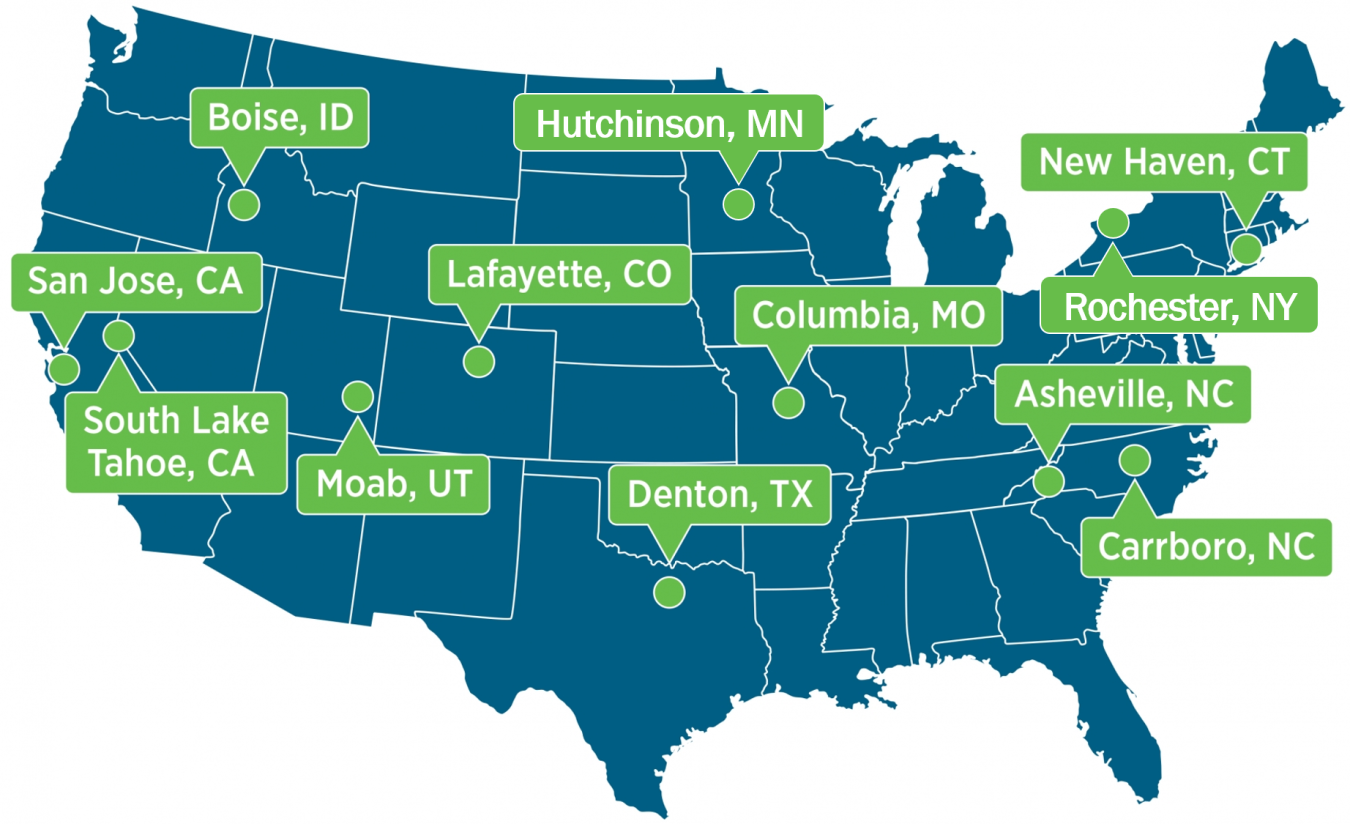See case studies demonstrating how cities have used State and Local Energy Data to inform their city energy planning.
March 13, 2017
The U.S. Department of Energy’s (DOE’s) Cities Leading through Energy Analysis and Planning project created case studies to demonstrate ways that data and analysis can enable energy planning decision support for U.S. cities. As fact sheets become available, they will be linked to each of their respective cities:
- Asheville, North Carolina: Reducing Electricity Demand through Building Programs & Policies
- Boise, Idaho: Improving Air Quality through Alternative Fuels & Reduced Vehicular Travel
- Carrboro, North Carolina: Achieving Building Efficiencies for Low-Income Households
- Columbia, Missouri: Using Energy Data to Reduce Emissions and Achieve Low-Income Household Energy Savings
- Denton, Texas: Using Transportation Data to Reduce Fuel Consumption
- Hutchinson, Minnesota: Evaluating Local Solar Energy Generation Potential
- Lafayette, Colorado: Using Energy Data for Electric Vehicle Infrastructure Planning
- Moab, Utah: Using Energy Data to Target Carbon Reductions from Building Energy Efficiency
- New Haven, Connecticut: Targeting Low-Income Household Energy Savings
- Rochester, New York: Reducing Energy Costs for Low-Income Households
- San Jose, California: Evaluating Local Solar Energy Generation Potential
- South Lake Tahoe, California: Using Energy Data to Partner on Building Energy Efficiency Actions
Cities across the country can follow this pattern as part of their own energy planning using State and Local Energy Profiles and SLOPE.
Return to the EERE Energy Analysis page.

